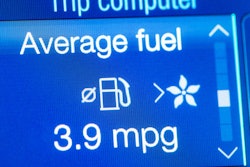United States Supreme Court on June 27 declined review of the Ninth Circuit Court of Appeals’ decision in Miller v. C.H. Robinson – a case that has been of keen interest to the transportation industry, particularly brokers, for quite some time.
Without the Supreme Court’s review, the decision of the case will stand, which held a broker liable for a personal injury claim on the theory of “negligent selection,” meaning the broker was careless in choosing the motor carrier that caused the injury. Unless SCOTUS picks up a similar case in the future, this decision is now the “law of the land," at least in parts of the United States.
The plaintiff, Allen Miller, was left paralyzed after a 2016 motor vehicle accident in Nevada where he alleges the tractor-trailer of the motor carrier hired by C.H. Robinson collided with his vehicle. C.H. Robinson’s only role was as a broker. Miller sued, among other defendants, C.H. Robinson, who Miller alleged negligently selected the motor carrier who caused the accident.
C.H. Robinson – initially successfully – argued that negligent selection claims against brokers related to motor vehicle accidents are preempted by the provisions of the Federal Aviation Administration Authorization Act (FAAAA), which is found, in relevant part, at 49 U.S.C. § 14501(c)(1) and provides that the “States may not enact or enforce a law, regulation, or other provision having the force and effect of law related to a price, route, or service of any motor carrier… broker, or freight forwarder with respect to the transportation of property.”
The Ninth Circuit, which governs the federal district courts in Alaska, Arizona, California, Guam, Hawaii, Idaho, Montana, Nevada, Northern Mariana Islands, Oregon, and Washington, reversed the trial court’s dismissal of Mr. Miller’s suit against C.H. Robinson finding that while the claim fit within the preemptive scope of the FAAAA because it “related to” the “services” of a “broker” “with respect to the transportation of property,” it was nonetheless saved from preemption by a later provision of the FAAAA, the so-called “safety exception.” The FAAAA “safety exception,” found at 49 U.S.C. § 14501(c)(2)(A), in relevant part, provides that the preemptive language contained earlier in the FAAAA does not apply if its application would “restrict the safety regulatory authority of a State with respect to motor vehicles…”
The Ninth Circuit ultimately held that negligent selection claims against brokers, to the extent that they arise out of motor vehicle accidents, promote safety on the roads and, while not directly regulating motor vehicles, do have the requisite “connection with” motor vehicles to qualify under the “safety exception.” C.H. Robinson appealed the decision to the United States Supreme Court who has now declined to take the case which has the effect of leaving the Ninth Circuit’s ruling intact and making it the law of the land in the expansive territory which makes up the Ninth Circuit.
The United States Supreme Court’s decision not to hear C.H. Robinson’s appeal is significant because it leaves the state of the FAAAA’s potential preemption of negligent hiring claims against broker arising out of motor vehicle accidents unsettled in the other federal circuits. Trial-level decisions finding preemption of the exact type of claim brought by Mr. Miller and determined to not be preempted by the Ninth Circuit presently exist in at least district courts found within the Third Circuit (Krauss v. IRIS USA, Inc., Civ. No. 17-778, 2018 WL 2063839 (E.D. Pa. May 3, 2018)); the Sixth Circuit (Creagan v. Wal-Mart Transportation, LLC, 354 F. Supp. 3d 808 (N.D. Ohio 2018)); the Seventh Circuit (Volkova v. C.H. Robinson Co., Civ. No. 16-1883, 2018 WL 741441 (N.D. Ill. Feb. 7, 2018) and Ying Ye v. Global Sunrise, Inc., Civ. No. 18-1961, 2020 WL 1042047 (N.D. Ill. Mar. 4, 2020)); the Tenth Circuit (Lloyd v. Salazar, 416 F. Supp. 3d 1290 (W.D. Okla. 2019)); and, most recently, the Eleventh Circuit (Gauthier v. Hard to Stop LLC, NO.: 6:20-cv-93, 2022 WL 344557 (S.D. Ga. Feb. 4, 2022).
Ironically, the unsettled nature and inconsistency among the courts on this issue has created the very thing that the FAAAA intended to prevent when it was enacted in 1994 as part of continued efforts to deregulate the trucking industry. Congressional efforts to avoid “a patchwork of state service-determining laws, rules and regulations” has, it seems, created “a patchwork of state service-determining laws, rules and regulations.”
The District Court for the Southern District of Georgia case Gauthier v. Hard to Stop LLC is presently pending appeal to the Eleventh Circuit. An affirmance by the Eleventh Circuit would set up a potential direct conflict with the Ninth Circuit’s now-final ruling in Miller which, if appealed, might then have the transportation industry again on high alert for a SCOTUS ruling on this critical issue. Until then, however, brokers must continue to operate in unsettled terrain.
It is important for all brokers arranging shipments into, out of, or through the applicable Ninth Circuit states to take notice of the United States Supreme Court’s decision not to settle the uncertainty surrounding the FAAAA and its safety exception. That is because, brokers, regardless of where they are domiciled or headquartered outside of this jurisdiction, may not be free from its impact if an accident on a brokered shipment occurs within the vast boundaries of the Ninth Circuit.
Impacts in carrier selection
With the threat of broker liability for negligent selection/hiring set to remain at the forefront of a broker’s operations, it is imperative brokers maintain a carrier selection policy that aligns with the goals, risks and contingent auto/truck broker liability insurance requirements maintained by the broker, as well as the duty of care set by the various jurisdictions within the Ninth Circuit.
When developing a broker’s carrier selection policy, it is important to understand that a broker has a “general duty of care when it hires trucking companies to deliver goods” (Nyswaner v. C.H. Robinson Worldwide Inc., No. CV-17-04130, 2019 WL 95896, at *2-3 (D. Ariz. Jan. 3, 2019)); a broker’s standard of care “is the ordinary and reasonable prudent person standard” (CGU Int'l Ins., PLC v. Keystone Lines Corp., No. C-02-3751 SC, 2004 WL 1047982, at *3 (N.D. Cal. May 5, 2004)); and a broker may be “liable based on a theory of negligent hiring for failure to perform due diligence prior to hiring” a motor carrier (Linhart v. Heyl Logistics, LLC, No. 10-3100- ‘PA, 2012 WL 325844 (D. Or. Feb. 1, 2012)). Therefore, when developing a carrier section policy, a broker must perform some level of due diligence, which is to include at least confirming a motor carrier maintains active Common or Contract operating authority, does not maintain an Unsatisfactory safety rating and has proof of financial responsibility (generally satisfied by maintaining a compliant auto liability insurance policy) in an amount required by applicable law.
Beyond those minimum requirements – while many contingent auto and truck broker liability insurers require a broker to prohibit or otherwise restrict the use of motor carriers maintaining (i) a conditional safety rating or (ii) one or more of the Behavioral Analysis and Safety Improvement Categories (BASICs) in a value above the intervention thresholds to secure coverage – there remains a deep divide among industry stakeholders regarding if and how to use such information. Whether to use such data is a company decision that must be maintained with consistency. At the heart of the matter, is whether the BASIC scores are reliable and whether it is appropriate in the first place for a broker to use such information in its selection policies. The Middle District of Louisiana found, “the record evidence establishes that BASIC scores are not indicative of motor carrier safety.” Dragna v. A&Z Transp., Inc., CIVIL ACTION 12-449-SDD-RLB, 18 (M.D. La. Feb. 19, 2015). Further, in accordance with the FAST Act of 2015, the actual BASIC scores and their corresponding alerts have been removed from public view.
This resulted in the FMCSA posting the following disclaimers about the use of SMS data and information:
• FAST Act of 2015 – Readers should not draw conclusions about a carrier's overall safety condition simply based on the data displayed in this system. Unless a motor carrier has received an Unsatisfactory safety rating under part 385 of title 49, Code of Federal Regulations, or has otherwise been ordered to discontinue operations by the Federal Motor Carrier Safety Administration, it is authorized to operate on the Nation's roadways.
• Safety Measurement System – The data in the Safety Measurement System (SMS) is performance data used by the Agency and Enforcement Community. A ⚠️ symbol, based on that data, indicates that FMCSA may prioritize a motor carrier for further monitoring.
The ⚠️ symbol is not intended to imply any federal safety rating of the carrier pursuant to 49 USC 31144. Readers should not draw conclusions about a carrier's overall safety condition simply based on the data displayed in this system. Unless a motor carrier in the SMS has received an Unsatisfactory safety rating pursuant to 49 CFR Part 385, or has otherwise been ordered to discontinue operations by the FMCSA, it is authorized to operate on the nation's roadways.
Keeping score
Unfortunately, what remains public within the Safety Measurement System are the specific, individual violations in five of the seven BASICs (unsafe driving, hours of service compliance, vehicle maintenance, controlled substances and alcohol and driver fitness), which leaves brokers in the impossible and unreasonable position to decipher safety data and determine a carrier’s fitness when the very governmental body maintaining oversight over all such information failed to accomplish the same.
However, in an attempt to fill this void, third-party vendors have emerged to independently calculate, through proprietary measures, BASIC “scores” to which brokers may subscribe and use, including Truckstop.com through its SaferWatch and RMIS platforms; Assure Assist through its MyCarrierPackets platform; DAT Solutions through its CarrierWatch platform; and CarrierAssure’s platform. Within these platforms, users are able to set their own parameters based either on the scores generated or the underlying violations. As with the removed BASIC scores, it is possible that these scores (generated by non-government entities) likewise fail to establish the desired correlation between safety and crash preventability. Alternatively, if a broker wishes to utilize the underlying violations in determining a carrier selection policy, it is important to understand the violations and their corresponding values prior to setting any minimum criteria within your selection policy. A description of the violations and their corresponding values can be found here.
Whether a broker elects to use such a third-party and incorporate the third-party’s BASIC scores or the underlying violations into its selection policy, it is important that the broker’s policy include specific use and reference to the FMCSA’s SAFER System and understand that any delay in data transmission from the FMCSA to the third-party vendor used by the broker (as it relates to safety, insurance, or authority) may result in liability for the broker if it fails to utilize the most up-to-date information found on the FMCSA website. Please note, the items relating to a broker’s carrier selection policy discussed herein represent only a portion of the considerations to be accounted for when developing a complete, corporate carrier selection policy)











